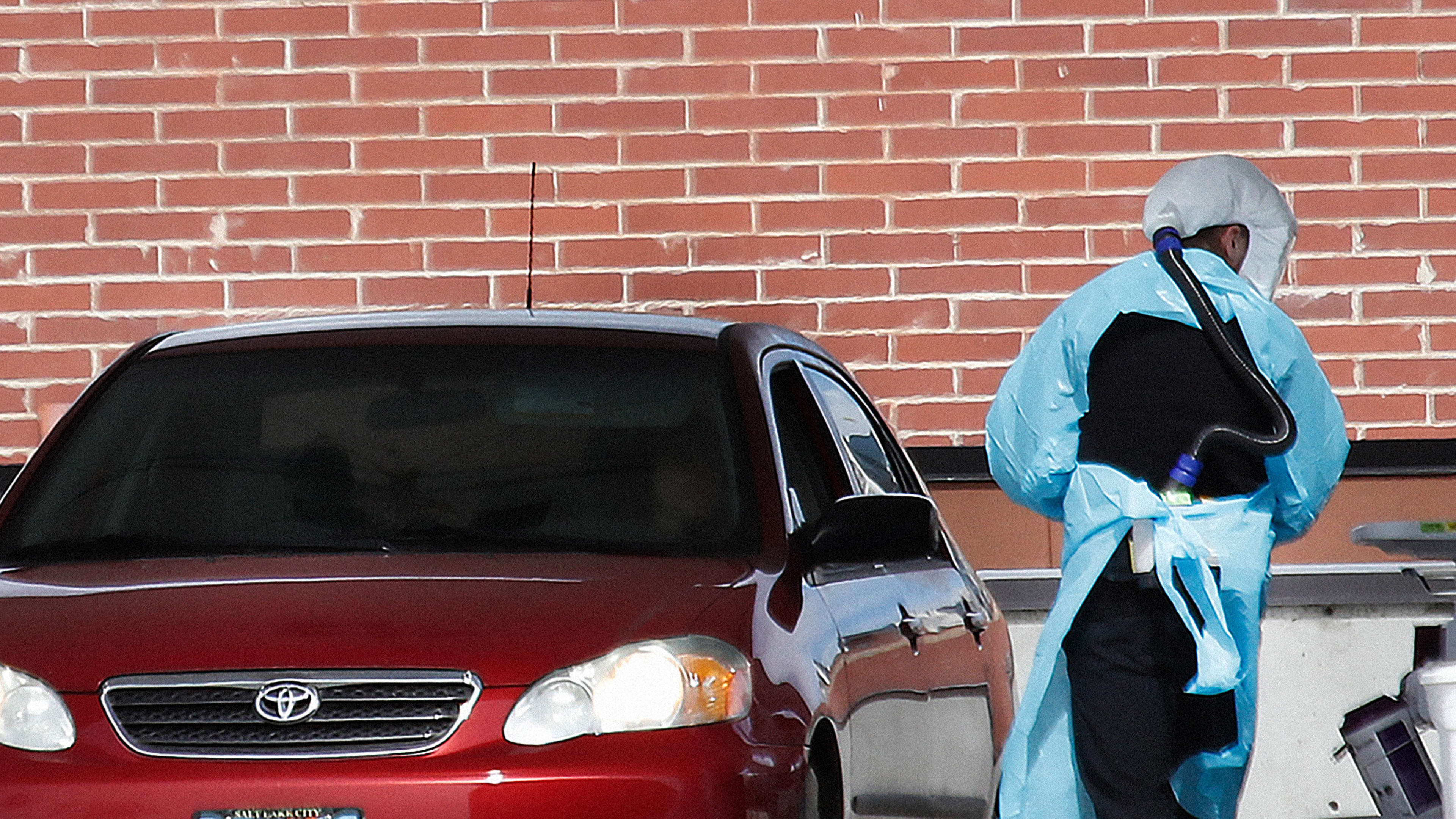If you go to the hospital now in New York or San Francisco with symptoms of COVID-19 that aren’t bad enough to keep you in the hospital—maybe you have a fever and a cough and some shortness of breath but can still get enough oxygen on your own—you may be told to assume that you have the virus and go home and rest. Because there are no specific drugs that target the disease, doctors are rationing tests for use on people in the hospital whose diagnosis might change their treatment plan. But the state of Utah is taking a different approach: testing as many people as possible.
On a new “Crush the Curve” website, everyone in the state is encouraged to answer questions about symptoms. Some answers trigger the system to recommend that someone gets tested and sends them a unique code to take to a testing location; when people have a positive test, the state tracks their contacts to do more testing. Utah will also soon also begin randomized testing to find asymptomatic carriers of the virus. It’s more like the approach used in South Korea—which quickly stopped the spread of coronavirus—than in other parts of the United States.

“A lot of states are looking at testing per capita, which is the wrong measure,” says Kris Cox, the executive director of the Utah Governor’s Office of Management and Budget. “The goal really is to find—I call it detecting the undetected. Think of an iceberg. You see the tip of the iceberg, and 90% of the iceberg is underwater, and that’s what’s gonna wreck your ship. With this virus, for about every one person who’s got the virus, estimates are there are another four people out there who have it, but they’re not known to the system. They may not even know they’re infected.” (As of April 8, Utah had 1,738 cases and 13 deaths.)
If widespread testing had happened much earlier in the U.S., it’s likely that we wouldn’t be facing the same economic devastation now. South Korea and the U.S. both reported their first cases in late January, but while South Korea quickly tested large numbers of people and was able to successfully limit the spread of the virus, the U.S. floundered. The CDC moved slowly and then sent out faulty tests in limited numbers. The FDA was slow to approve new tests. Even when Trump claimed that widespread testing was available, it wasn’t. Testing was so limited initially that the first community-spread cases were detected only when researchers went ahead without government approval.
Utah was watching what was happening in South Korea at an early stage, Cox says. “We started to think this way a while ago. Most of the models are just looking at how you predict the virus spread itself by epidemiologists . . . What I’m interested in is what are the operational levers we can pull to impact the virus spread.”
Working with the tech advocacy group Silicon Slopes, the Utah Health Department moved to quickly scale up testing, doubling testing capacity from 3,000 tests per day to 6,000 tests per day. Tests mean that people who are ill can be isolated, their contacts can be traced, doctors can better understand the disease’s true impact, and those who know that they’ve had the disease and recovered can safely go back into society (and perhaps help volunteer in healthcare where resources are limited). It’s a critical part of understanding when businesses can reopen.
“Testing is huge,” Cox says. “We have to learn to live with the virus until there’s an antiviral. We’re not just going to shut down for four, or five, six months.” The state is figuring out what protocols it needs to have in place, including testing, to decide when it’s safe for people to go back to work. As new tests become available, including antibody tests that show if someone has already recovered from the illness, the state will use those as well.
The randomized tests, which will begin in around 10 days, will also be a key part of the solution. In Iceland, which has also done widespread testing, around half of those who tested positive showed no symptoms at the time they took their test, meaning they were spreading the virus without realizing it.
Social distancing helps, but testing and tracing contacts of those who are infected is also a critical tool. Other states are already beginning to ask Utah about the program as they consider replicating it, Cox says. (Some other locations are also ramping up testing now, including Los Angeles, which just lifted restrictions so anyone with symptoms can now get tested.) It’s important that it doesn’t just happen in isolated areas. “We all do better the better any of us do,” Cox says. “If other states are struggling, we struggle. We all need to do this together to bring the economy back online.”
Recognize your brand’s excellence by applying to this year’s Brands That Matter Awards before the early-rate deadline, May 3.
